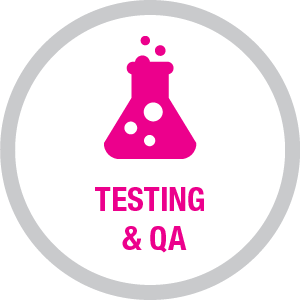It is common knowledge that software testing began to boom during the year 2000 when all of a sudden, companies faced the threat of the Y2K bug and the introduction of the Euro. What fewer people know is that software testing has been around since the fifties of last century. Over those sixty years, the testing paradigm has clearly shifted a few times.
In the current general market, we observe a trend where testing is moving from just a phase in the project towards a constant verification of business needs versus product features during the complete Application Lifecycle.









